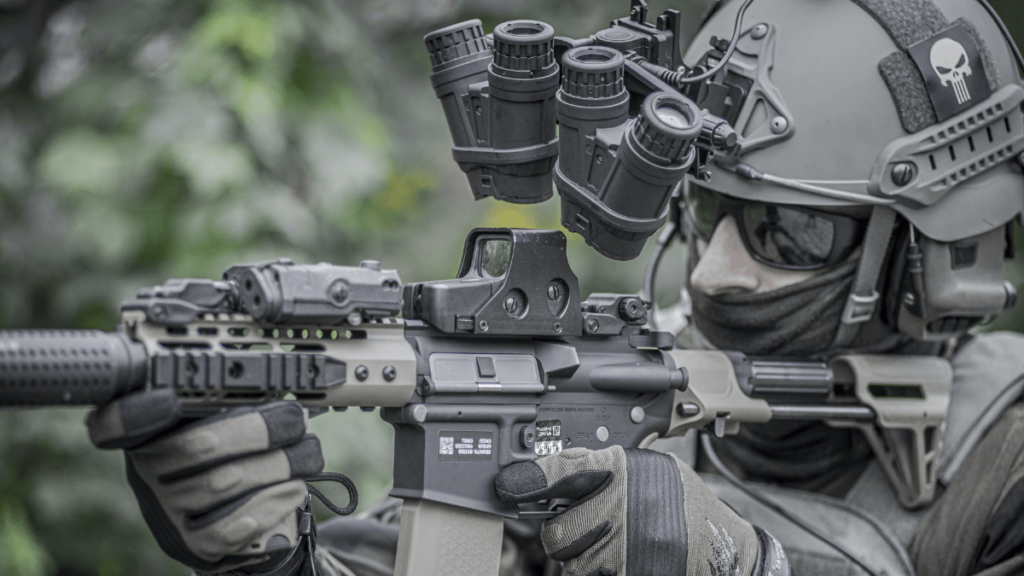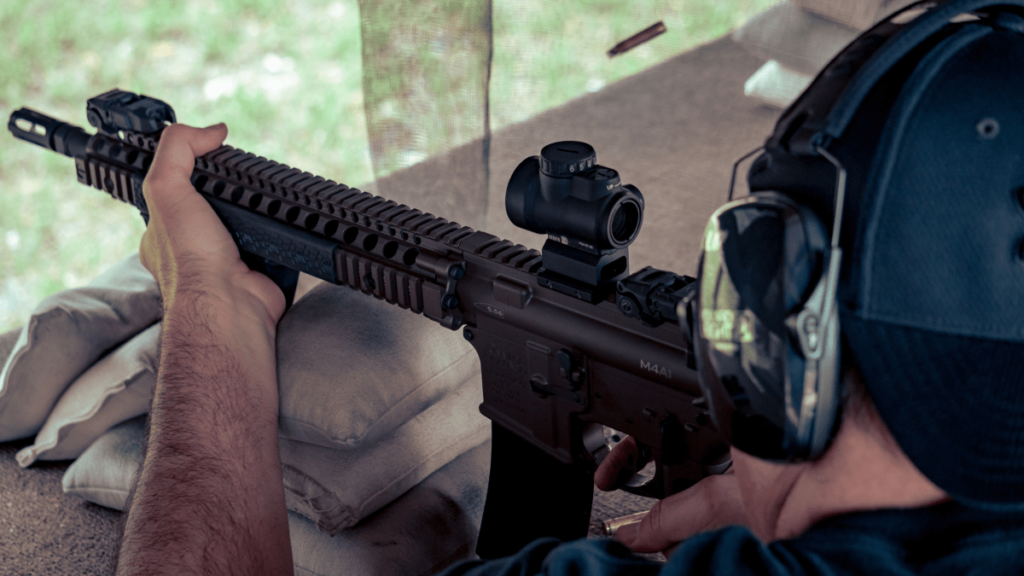A commonly asked question when it comes to firearms is “what’s the difference between red dot vs reflex sights?”. It’s a question as common as carbines versus rifles and ar15s vs M16s.
Many firearms enthusiasts would naturally like to use the best possible sight, and since these two crop up at the top of many lists, a lot of people have trouble choosing between them.
Firstly, a little clarification: a reflex sight is actually a variation of a red dot sight. That means that all reflex sights are actually red dot sights (though the inverse is not true; not all red dot sights are reflex sights).
With that made clear, we return to the question: what’s the difference between a red dot sight and a reflex one?
What is a Red Dot Sight?

Red dot sights encompass a broad category of sights (one of which, as we mentioned, is the reflex sight). Holographic, prism and reflex sights are all variations of red-dot sights.
The term ‘red dot’ is, itself, misleading. Some of these sights may use green dots, and some may use no dot at all. The thing that binds all red dot sights together is the fact that some sort of electronic imaging is used to assist with your aim.
Red dot sights are extremely flexible due to the sheer variety of different ones available, so there’s something for everyone if you do decide to go the electronic imaging route. The illuminated dot also makes it quick and easy to draw a bead on your target.
How do Red Dot Sights Work?
Red dot sights make use of a specialized mirror and an LED dot projection to render the titular red dot. The LED, when activated, is shone onto the mirror, which is set at an angle. This results in the dot being rendered against the lens, which aids the shooter in acquiring their target.
Because of the coating on the mirror, the dot is reflected back as red. It is not natively red; this is simply the wavelength that ends up being bounced back to the eye.
Because of their relatively simple and straightforward design, red dot sights have no need of additional lenses or further focusing in order to be used correctly.
What Kind of Red Dot Sights are there?
Aside from reflex sights (which we’ll obviously get to in a moment), there are two kinds of red dot sight.
Prism Sights
Prisms eschew the use of multiple lenses in favor of rendering the red dot with, as you might have guessed, prisms. Prisms have a slight advantage over other kinds of red dot sights because they provide a slight level of magnification.
However, they do come with a couple of drawbacks. The first is that they only have short eye relief, meaning that your eye needs to be quite close before you can acquire your target. Secondly, although prices have come down in recent years, they’re a little expensive.
Holographic Sights
These sights have a pre-painted reticle sandwiched between layers of glass. They are commonly considered to be the best kind of red dot sight, due to the fact that they can be used with both eyes open and thus can acquire targets very quickly.
However, the patent for holographic sights is held by a single company – EO Tech. Because they hold the monopoly on holographic sights, they can (and do) charge as much as they want for them, and the sights are currently around three times as expensive as other types.
What is a Reflex Sight?

A reflex sight is, as previously mentioned, simply a type of red dot sight. It takes its name from the technical aspect that’s responsible for your seeing a red dot: a light is projected from the back of the scope to a lens at the front, which then reflects the light back to your eye in the form of a dot.
Reflex sights can be further broken down into two subcategories: exposed reflex sights, and tube reflex sights.
Exposed Reflex Sights
This kind of reflex sight has no eye relief, and a single lens at the front of the scope. It’s this lens that reflects the dot back into your eye. Because it has no eye relief, an exposed reflex sight is great for very quickly acquiring your target.
Tube Reflex Sights
As you might guess, a tube reflex sight features a tube – the kind you might see in more traditional scopes. It has two lenses – one at either end of the tube – and the rearmost one is used to project the dot onto the frontmost one (and, from there, back to your eye). Like an exposed reflex sight, there is no eye relief, and so it’s quite quick to acquire a target – if not quite as fast as the exposed variation.
Whatever the variety of reflex, they are much-loved because of their lack of eye relief – which facilitates rapid target acquisition without having to close one eye – and their lightweight design. Some don’t even need batteries, which means that they can be used indefinitely with very little maintenance.
Conclusion to Red Dot vs Reflex
The discussion of whether red dot or reflex sights are better is one that crops up often in gun enthusiast circles, but as we’ve seen the whole conversation is predicated upon a misunderstanding – reflex sights are, in actuality, a type of red dot sight.
When it comes to reflex sights versus other kinds of red dot sights, the fact is that reflex sights have a lot of strings to their bow. They’re cheaper than prism sights (and much cheaper than holographic sights), it’s quicker to draw a bead on your target, and their lightweight design and flexibility make it easy to attach them to a variety of weapons.
When you add to that the fact that reflex sights of either variety use less battery power (or, in some cases, no battery power at all), and you have a sight that’s sturdy, reliable, and versatile. Though it’s not for us to say that reflex sights are strictly better than other types of red dot sight, there is a persuasive argument to be made.


[…] avoid this, make sure that your front sight is sitting firmly in the center of your rear […]